
Werner Dafeldecker and Valerio Tricoli re-interpret John Cage's 1953 compositions for 8 simultaneously played tapes, here examining the relationship between early tape music and current digital production, allowing for a larger work using approximately 2000 different sounds.
Out of Stock
Quantity in Basket: None
Log In to use our Wish List
Shipping Weight: 2.00 units
Sample The Album:
John Cage-composer
Werner Dafeldecker-performer
Valerio Tricoli-performer
Click an artist name above to see in-stock items for that artist.
UPC: 680569061430
Label: Quakebasket
Catalog ID: qb28
Squidco Product Code: 21151
Format: CD
Condition: New
Released: 2015
Country: USA
Packaging: Cardboard Gatefold In Plastic Sleeve
Mastered at Studio Beige in Berlin, Germany by Nicholas Bussman.
"Williams Mix Extended is a new interpretation of John Cage's Williams Mix by Werner Dafeldecker and Valerio Tricoli, originally scored for magnetic tape in 1952. Approaching the original score from a contemporary perspective, this new interpretation of Williams Mix contains a close analysis of the relationship between early tape music and current digital production, allowing for original parameters of the score to be realized within the context of recent audio technologies. Williams Mix Extended has an duration of 32 minutes whereas the original is 4 minutes and 15 seconds long. The difference between the two durations is generated by the transposition of the scores specifications from tape to digital audio software. To complete Williams Mix Extended a library of approximately 2000 different sounds are used, all recorded by Dafeldecker and Tricoli."-Dafeldecker.com
"Williams Mix (1951-1953) is a 4'15" electronic composition by John Cage for eight simultaneously played independent quarter-inch magnetic tapes. The first octophonic music, the piece was created by Cage with the assistance of Earle Brown, Morton Feldman, and David Tudor, using a large number of tape sound sources and a paper score he created for the construction. "Presignifying the development of algorithmic composition, granular synthesis and sound diffusion," it was the third of five pieces completed in the Project for Music for Magnetic Tape (1951-1954), funded by dedicatee architect Paul Williams.
The material, recorded by Louis and Bebe Barron, was organized in six categories: city, country, electronic, manually produced, wind, and "small" sounds; "subjected...to I Ching manipulations, producing constant jumps from one sound to another or buzzing, scrambled textures of up to sixteen simultaneous layers." The 193-page score, "a full-size drawing of the tape fragments, which served as a 'score' for the splicing," is described by Cage as similar to "a dressmaker's pattern - it literally shows where the tape shall be cut, and you lay the tape on the score itself." Thus, like a recipe, the piece may be recreated using different tapes and the score.
The work was premiered at the 25th Year Retrospective Concert Of The Music Of John Cage on May 15, 1958, and was recorded by Columbia Records producer George Avakian and issued by him on a three-LP set with a booklet including extensive notes and illustrations of scores."-Wikipedia
Artist Biographies
• Show Bio for John Cage "John Milton Cage Jr. (September 5, 1912 - August 12, 1992) was an American composer, music theorist, writer, philosopher, and artist. A pioneer of indeterminacy in music, electroacoustic music, and non-standard use of musical instruments, Cage was one of the leading figures of the post-war avant-garde. Critics have lauded him as one of the most influential American composers of the 20th century. He was also instrumental in the development of modern dance, mostly through his association with choreographer Merce Cunningham, who was also Cage's romantic partner for most of their lives. Cage is perhaps best known for his 1952 composition 4′33″, which is performed in the absence of deliberate sound; musicians who present the work do nothing aside from being present for the duration specified by the title. The content of the composition is not "four minutes and 33 seconds of silence," as is often assumed, but rather the sounds of the environment heard by the audience during performance. The work's challenge to assumed definitions about musicianship and musical experience made it a popular and controversial topic both in musicology and the broader aesthetics of art and performance. Cage was also a pioneer of the prepared piano (a piano with its sound altered by objects placed between or on its strings or hammers), for which he wrote numerous dance-related works and a few concert pieces. The best known of these is Sonatas and Interludes (1946-48). His teachers included Henry Cowell (1933) and Arnold Schoenberg (1933-35), both known for their radical innovations in music, but Cage's major influences lay in various East and South Asian cultures. Through his studies of Indian philosophy and Zen Buddhism in the late 1940s, Cage came to the idea of aleatoric or chance-controlled music, which he started composing in 1951. The I Ching, an ancient Chinese classic text on changing events, became Cage's standard composition tool for the rest of his life. In a 1957 lecture, Experimental Music, he described music as "a purposeless play" which is "an affirmation of life - not an attempt to bring order out of chaos nor to suggest improvements in creation, but simply a way of waking up to the very life we're living"." ^ Hide Bio for John Cage • Show Bio for Werner Dafeldecker "Werner Dafeldecker was born in Vienna in 1964 and studied the double bass which he plays with passion. As a musician, composer and sound artist he takes advantage of the manifold possibilities offered by electro-acoustics. His musical projects are often inspired and deduced by outside influences such as architecture, science, photography and film - partially resulting in the creation of graphical scores for various ensembles and instrumental performers. Werner also focuses on site specific projects, field recording and opposing natural and environmental sounds with synthetic variants. He has built up an extensive sound archive and created several electroacoustic pieces for radio and film. Around ninety sound-recordings are documenting his artistic framework. He held lectures and workshops presenting his work i.a. at University Bellas Artes-Madrid, Hochschule für Gestaltung-Karlsruhe, RMIT University-Melbourne and Edith Cowan University-Perth. Commissions / Exhibitions / Performances: Kammermusiktage Witten; Contemporary Arts Museum, Houston; Berliner Festspiele Maerz Musik Festival; Sound field Festival, Chicago; Festival Wien Modern; Festival Hörgänge, Wien; Centre Pompidou, Paris; Steirischer Herbst, Graz; What is Music Festival, Australia; International Music Festival, Vancouver; LMC Festival, London; Dundee Media Festival; Ultraschall Festival, Berlin; SWR; ORF; Salzburger Festspiele; Liquid Architecture Festival, Australia; Darmstädter Ferienkurse; Serralves Festival, Porto, ZKM, Karlsruhe; Museum of Contemprary Art, Zagreb; Museo Reina Sofia, Madrid; Gronland Kammermusikk Festival, Oslo; Festival Mikromusik, Berlin; Borealis Festival, Oslo; Akademie der Künste, Berlin; Klangspuren Schwaz, Tirol; Transmediale Festival, Berlin" ^ Hide Bio for Werner Dafeldecker
3/6/2019
Have a better biography or biography source? Please Contact Us so that we can update this biography.
3/6/2019
Have a better biography or biography source? Please Contact Us so that we can update this biography.
Track Listing:
1. Side A - 16:07 (Page 1-96) 1 8:24
2. Side A - 16:07 (Page 1-96) 2 7:43
3. Side B - 15:59 (Page 97-192) 1 7:46
4. Side B - 15:59 (Page 97-192) 2 8:06
Compositional Forms
Avant-Garde
John Cage
Electro-Acoustic
Electroacoustic Composition
New in Compositional Music
Search for other titles on the label:
Quakebasket.


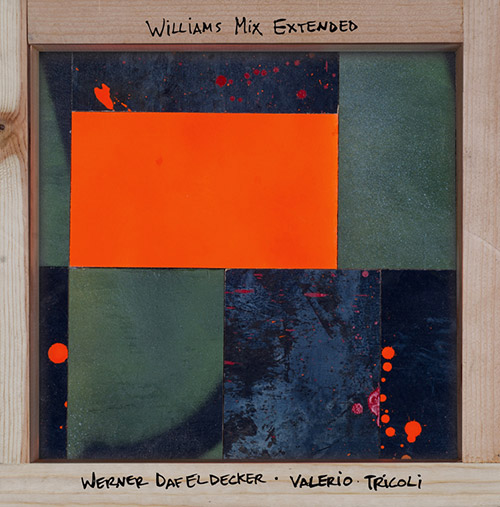



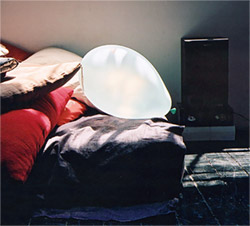


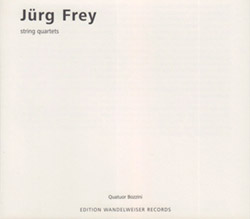


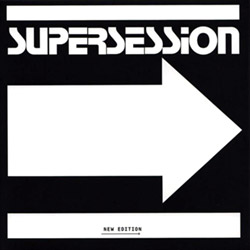




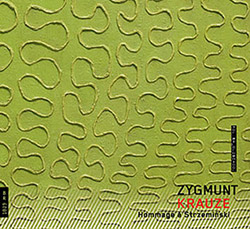

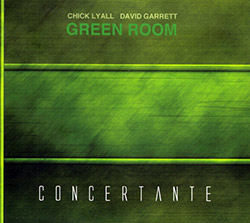
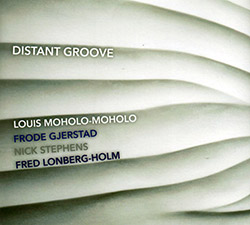
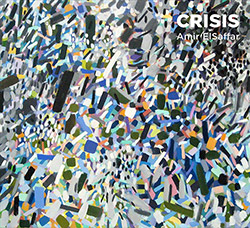









![Guy, Barry / Ken Vandermark: Occasional Poems [2 CDs]](https://www.teuthida.com/productImages/misc4/34849.jpg)
![Novoa / Carter / Mela Trio: Vol.1 [VINYL]](https://www.teuthida.com/productImages/misc4/35236.jpg)


![Elephant9 : Mythical River [VINYL]](https://www.teuthida.com/productImages/misc4/34624.jpg)
![Evans, Peter (Evans / Eldh / Black): Extra [VINYL]](https://www.teuthida.com/productImages/misc4/35279.jpg)

![McPhee, Joe: Straight Up, Without Wings [BOOK]](https://www.teuthida.com/productImages/misc4/35454.jpg)
![Jeck, Philip: rpm [2 CDs]](https://www.teuthida.com/productImages/misc4/35455.jpg)













![Barker / Parker / Irabagon: Bakunawa [VINYL]](https://www.teuthida.com/productImages/misc4/35533.jpg)
![Blaser, Samuel / Marc Ducret / Peter Bruun: Dark Was The Night, Cold Was The Ground [VINYL 10-inch]](https://www.teuthida.com/productImages/misc4/35492.jpg)








![Warren, Kenny (Warren / Hoffman / Ellman): Sweet World [VINYL]](https://www.teuthida.com/productImages/misc4/35451.jpg)




![Blake, Ran / Dave Knife Fabris: Live Amsterdam 2006, First Visit [CD + POSTCARDS]](https://www.teuthida.com/productImages/misc4/35275.jpg)













![DNS: Taking Big Bites Of The Khandas Three Cafes Deep [2 CDs]](https://www.teuthida.com/productImages/misc4/35334.jpg)




![Cleaver, Gerald: The Process [VINYL]](https://www.teuthida.com/productImages/misc4/34966.jpg)




![Alva Noto: HYbr:ID II [VINYL 2 LPs]](https://www.teuthida.com/productImages/misc4/35201.jpg)

![Baron, Derek / Luke Martin: Distinct and Concealed [CASSETTE + DOWNLOAD]](https://www.teuthida.com/productImages/misc4/35079.jpg)

![Lyle, Erica Dawn : Colonial Motels [CASSETTE + DOWNLOAD]](https://www.teuthida.com/productImages/misc4/35080.jpg)









![Sanna, Claudio: Compositori Sardi Contemporanei II [2 CDs]](https://www.teuthida.com/productImages/misc4/35317.jpg)







![Zurria, Manuel: Fame di Vento [3 CDs]](https://www.teuthida.com/productImages/misc4/35167.jpg)

![Granberg, Magnus / Nattens Inbrott / Skogen: Holde Traume, Kehret Wieder! [2 CDs]](https://www.teuthida.com/productImages/misc4/35038.jpg)
![Frey, Jurg: Outermost Melodie [2 CDs]](https://www.teuthida.com/productImages/misc4/35039.jpg)

![Pavone, Jessica: Reverse Bloom [VINYL]](https://www.teuthida.com/productImages/misc4/34895.jpg)




![Modney (Modney / Wooley / Gentile / Roberts / Pluta / Symthe / ...): Ascending Primes [2 CDs]](https://www.teuthida.com/productImages/misc4/34852.jpg)









![Elephant9 with Terje Rypdal: Catching Fire [VINYL 2 LPs]](https://www.teuthida.com/productImages/misc4/35355.jpg)
![Deerlady (Obomsawin, Mali / Magdalena Abrego): Greatest Hits [VINYL]](https://www.teuthida.com/productImages/misc4/34876.jpg)




![Haino, Keiji: Black Blues [2 CDs]](https://www.teuthida.com/productImages/misc4/35109.jpg)



![Surplus 1980: Illusion of Consistency [CD]](https://www.teuthida.com/productImages/misc4/35069.jpg)
![Staiano, Moe: Away Towards the Light [VINYL + DOWNLOAD]](https://www.teuthida.com/productImages/misc4/35037.jpg)



![Caveira (Gomes / Sousa / Abras / Ferrandini): Ficar Vivo [VINYL]](https://www.teuthida.com/productImages/misc4/34643.jpg)
![Gregg, J. J. / David Van Auken: Lunar Prairie [CD w/ DOWNLOAD]](https://www.teuthida.com/productImages/misc4/34611.jpg)

![Coultrain: Mundus [VINYL]](https://www.teuthida.com/productImages/misc4/32439.jpg)
![Mattin: Songbook #6 [VINYL]](https://www.teuthida.com/productImages/misc4/27317.jpg)
![Punkappella: Wake Up [7-inch VINYL]](https://www.teuthida.com/productImages/misc4/17519.jpg)
![Residents, The: WARNING: UNiNC.: Live And Experimental Recordings 1971-1972 [VINYL 2 LPs]](https://www.teuthida.com/productImages/misc4/31521.jpg)
![Coultrain: Phantasmagoria [VINYL]](https://www.teuthida.com/productImages/misc4/30142.jpg)
![Lennon, Sean Ono: Asterisms [VINYL]](https://www.teuthida.com/productImages/misc4/34517.jpg)

![Coley, Byron: Dating Tips for Touring Bands [VINYL]](https://www.teuthida.com/productImages/misc4/17906.jpg)

![Lost Kisses: My Life is Sad & Funny [DVD]](https://www.teuthida.com/productImages/misc4/lostKissesDVD.jpg)